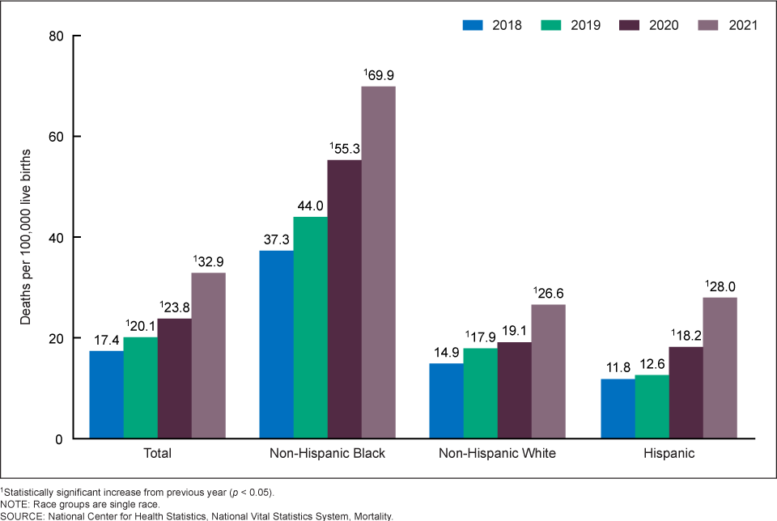BY SUSAN TEBBEN
With a recent CDC report showing a significant increase in maternal mortality, Ohio health advocates say the state needs more prevention strategies, particularly when it comes to minority health.
The CDC’s report showed a 40% increase in maternal mortality in 2021, the most recent data released by the National Vital Statistics System.
The report showed that maternal death – that is a pregnant person’s death or the death of an individual not considered accidental or incidental – occurred in 1,205 women, up from 861 in 2020 and 754 in 2019. The 2021 rate amounts to 32.9 deaths per 100,000 live births.
The rate of maternal death for Black women was 2.6 times higher than for White women, at 69.9 deaths per 100,000 live births.
“The increases from 2020 to 2021 for all race and Hispanic-origin groups were significant,” the CDC report stated.
April is Minority Health Month in the U.S. and Ohio, and with fresh data from the CDC, minority health and legislative leaders want to see action to address the issue.
“There is a maternal crisis in the United States,” said Angela Dawson, director of the Ohio Commission on Minority Health, in a recent meeting of the Black Maternal Health Caucus.
She pointed to another study from the March of Dimes that showed maternal mortality has increased nationally since 2018 by 89%, and Black women are still 2.5 times more likely to die than white or Hispanic women in the US.
Persistent gaps exist, only exacerbated by the COVID-19 pandemic, and those gaps appear to have patterns aligned with discriminatory practices like redlining, the practice of refusing minority groups financial help based on the area in which they live.
Dawson said the data shows communities that are redlined are the same communities exhibiting high rates of maternal mortality, along with cancer, diabetes and other negative health outcomes.
“What we’ve done to support infant mortality, we must follow the same path to get the same level of support for maternal mortality,” Dawson said.
That would include statewide information tours, “hubs” to address the issues, and legislative packages to hit the ground running and effect change.
A bill is already active in the Ohio General Assembly, seeking to expand doula services and Medicaid reimbursement for the services, something Dawson and state Sen. Catherine Ingram, D-Cincinnati, said is a good start.
But more help is needed for Black and minority communities, including strengthening primary care, access to services, community-level participation in policy development and modernizing race and ethnicity data, along with investing in social services to break down system barriers.
“If I’ve got more people who are capable of working and living in those areas, then that makes a difference for all of us,” Ingram said.
But legislation like Senate Bill 83, which would require institutions of higher ed to eliminate mandatory diversity, equity and inclusion trainings, and measures that threaten funding for groups who utilize DEI policies should be a concern, according to Ingram.
“My fear is that, though we are talking about Black maternal health and minority health and all these things that we know are good … that the language is such that they’re trying their best to not have that conversation about disparities that they know exist,” Ingram said.
Also from Ohio Capital Journal:





